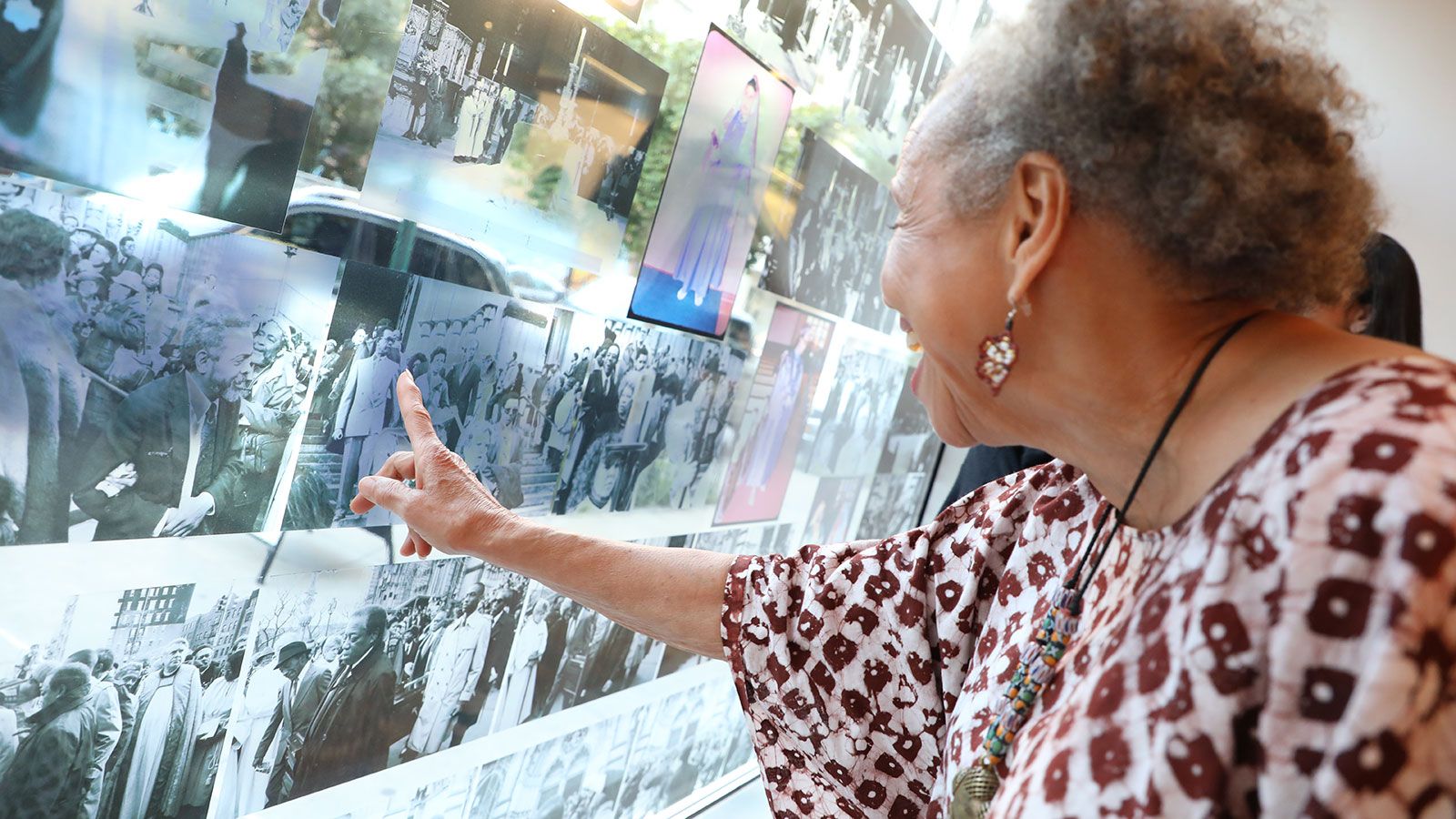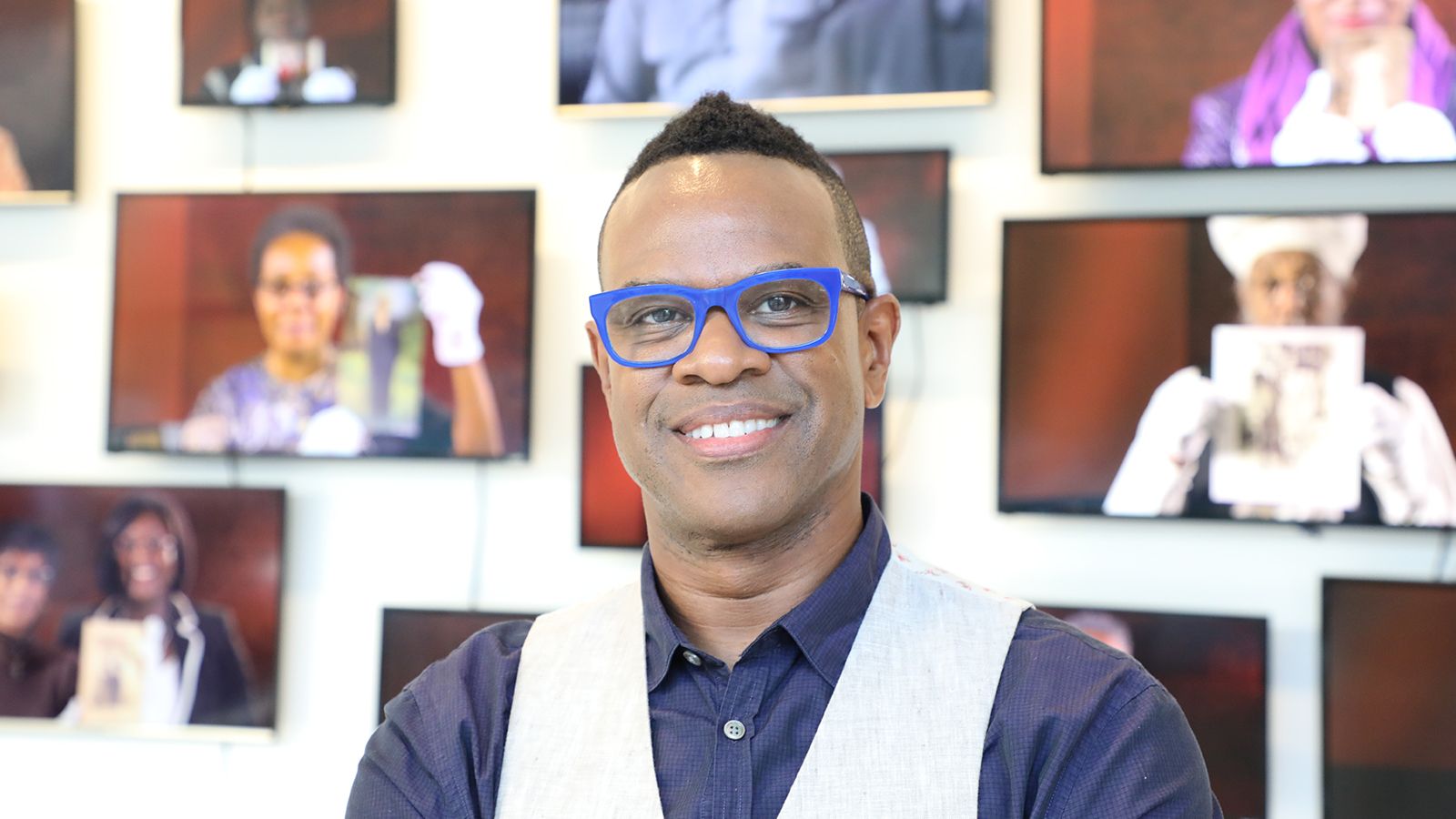Artist and filmmaker Thomas Allen Harris has a long history of combining art with activism, delving into the intersections between personal narratives and social movements. So when Professor Andrew Lund, director of Hunter’s MFA program in Integrated Media Arts (IMA), invited him to teach a course based on Digital Diaspora Family Reunion (DDFR), his transmedia project that builds and celebrates accessible community archives through workshops, performances, and digital media centered around the family photographic album– he was eager to bring his methodologies to the Hunter classroom.
Over the fall one-semester course, Harris encouraged the students to redefine their notions of “archive” and to produce work that featured their families according to their own definitions. When the students shared their work at the end of the class, “it was like a festival – people did art projects, screenings, films, performances, all kinds of cultural expression using the digital diaspora methods,” Harris remembers. This Harvard-educated artist has taught all over the country and the globe, and was struck by the particular diversity, talent and vibrancy of his class at Hunter. “The work was so moving; people were crying. And I just thought, the work is so strong and these students are so dedicated and smart, I wanted their work to be seen in a larger context.”
So he reached out to Natalie Conn, an IMA MFA graduate advisor: could they find a way to showcase the students’ art? The team at IMA MFA moved into action; Professor Andrew Demirjian began brainstorming with Conn and Harris about possibilities. They brought in Arden Sherman, the curator of the Hunter East Harlem Gallery, and suddenly the conversation had moved beyond a one-time pop-up showcase of student art to a more comprehensive showcase opportunity: an entirely new course, held in the HEH Gallery. Conceived by Conn, Demirjian, Harris, and Sherman, they birthed a new idea – a new course that would lead to an official exhibit: a collaboration with Harris, presenting his art side-by-side with the students’ work.
Once the East Harlem location was introduced, Harris was eager to explore his roots in the community, particularly with First AME Church: Bethel, the site of his family’s ancestral spiritual home where his grandfather had taken copious photographs many years before, and where Harris himself had come of age. For Harris, who has achieved international attention for his deeply human and illuminating films, lectures, installations and writing, this project presented a kind of homecoming. For the students – Chris J Gauthier, Patri González Ramírez, Cynthia Groya, Janis Mahnure, Melissa Montero, Allie Shyer, and Jacqueline Wade – it offered a new to reflect on their own homelands and personal journeys.



